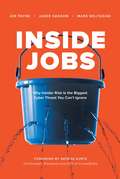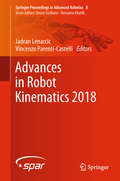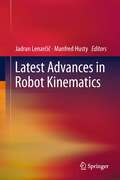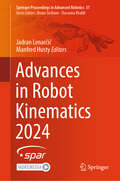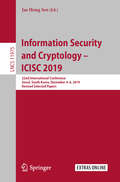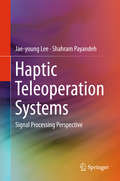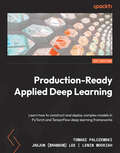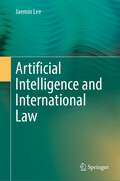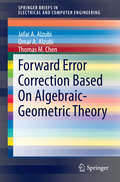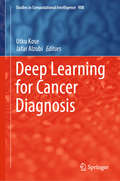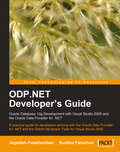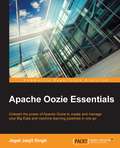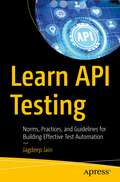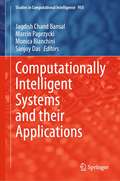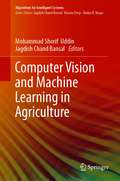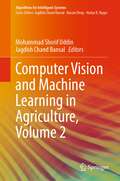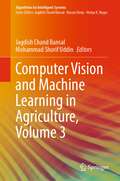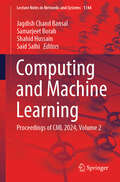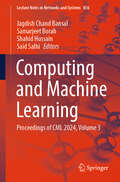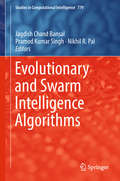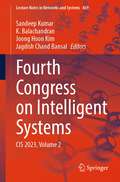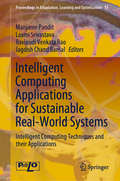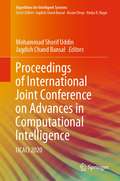- Table View
- List View
Inside Jobs: Why Insider Risk Is the Biggest Cyber Threat You Can't Ignore
by Joe Payne Jadee Hanson Mark WojtasiakFrom data security company Code42, Inside Jobs offers companies of all sizes a new way to secure today&’s collaborative cultures—one that works without compromising sensitive company data or slowing business down. Authors Joe Payne, Jadee Hanson, and Mark Wojtasiak, seasoned veterans in the cybersecurity space, provide a top-down and bottom-up picture of the rewards and perils involved in running and securing organizations focused on rapid, iterative, and collaborative innovation. Modern day data security can no longer be accomplished by &“Big Brother&” forms of monitoring or traditional prevention solutions that rely solely on classification and blocking systems. These technologies frustrate employees, impede collaboration, and force productivity work-arounds that risk the very data you need to secure. They provide the illusion that your trade secrets, customer lists, patents, and other intellectual property are protected. That couldn&’t be farther from the truth, as insider threats continue to grow. These include: Well-intentioned employees inadvertently sharing proprietary dataDeparting employees taking your trade secrets with them to the competitionA high-risk employee moving source code to an unsanctioned cloud service What&’s the solution? It&’s not the hunt for hooded, malicious wrongdoers that you might expect. The new world of data security is built on security acting as an ally versus an adversary. It assumes positive intent, creates organizational transparency, establishes acceptable data use policies, increases security awareness, and provides ongoing training. Whether you are a CEO, CIO, CISO, CHRO, general counsel, or business leader, this book will help you understand the important role you have to play in securing the collaborative cultures of the future.
Advances in Robot Kinematics 2018 (Springer Proceedings in Advanced Robotics #8)
by Jadran Lenarcic Vincenzo Parenti-CastelliThis is the proceedings of ARK 2018, the 16th International Symposium on Advances in Robot Kinematics, that was organized by the Group of Robotics, Automation and Biomechanics (GRAB) from the University of Bologna, Italy.ARK are international symposia of the highest level organized every two years since 1988. ARK provides a forum for researchers working in robot kinematics and stimulates new directions of research by forging links between robot kinematics and other areas.The main topics of the symposium of 2018 were: kinematic analysis of robots, robot modeling and simulation, kinematic design of robots, kinematics in robot control, theories and methods in kinematics, singularity analysis, kinematic problems in parallel robots, redundant robots, cable robots, over-constrained linkages, kinematics in biological systems, humanoid robots and humanoid subsystems.
Latest Advances in Robot Kinematics
by Jadran Lenarcic Manfred HustyThis book is of interest to researchers inquiring about modern topics and methods in the kinematics, control and design of robotic manipulators. It considers the full range of robotic systems, including serial, parallel and cable driven manipulators, both planar and spatial. The systems range from being less than fully mobile to kinematically redundant to overconstrained. In addition to recognized areas, this book also presents recent advances in emerging areas such as the design and control of humanoids and humanoid subsystems, and the analysis, modeling and simulation of human body motions, as well as the mobility analysis of protein molecules and the development of machines which incorporate man.
Advances in Robot Kinematics 2024 (Springer Proceedings in Advanced Robotics #31)
by Manfred Husty Jadran LenarčičThis book is aimed at researchers specializing in the kinematics of robot mechanisms as well as at doctoral students in guiding their research work. A spectrum of the latest achievements in kinematics analysis, modelling, simulation, design and control is covered. New theories and methods are applied to serial, parallel and cable-driven mechanisms for use in industrial or service robotics. The systems range from being less than fully mobile to kinematically redundant and over-constrained. Forty-nine papers are included, arranged in seven chapters, as presented at the 19th Symposium on Advances in Robot Kinematics 2024. The symposium, which has been held since 1988, was organized this time in Ljubljana (Slovenia), where it began thirty-six years ago. The papers have been rigorously selected based on peer review and are arranged in chapters randomly, as is the prevailing tradition of these symposia. In doing so, we aim to give equal emphasis to each of these achievements.
Information Security and Cryptology – ICISC 2019: 22nd International Conference, Seoul, South Korea, December 4–6, 2019, Revised Selected Papers (Lecture Notes in Computer Science #11975)
by Jae Hong SeoThis book constitutes revised selected papers from the 22nd International Conference on Information Security and Cryptology, ICISC 2019, held in Seoul, South Korea, in December 2019. The total of 18 papers presented in this volume were carefully reviewed and selected from 43 submissions. The papers were organized in topical sections named: public-key encryption and implementation; homomorphic encryption; secure multiparty computation; post-quantum cryptography; secret sharing and searchable encryption; storage security and information retrieval; and attacks and software security.
Haptic Teleoperation Systems
by Jae-Young Lee Shahram PayandehThis book examines the signal processing perspective in haptic teleoperation systems. This text covers the topics of prediction, estimation, architecture, data compression and error correction that can be applied to haptic teleoperation systems. The authors begin with an overview of haptic teleoperation systems, then look at a Bayesian approach to haptic teleoperation systems. They move onto a discussion of haptic data compression, haptic data digitization and forward error correction.
Production-Ready Applied Deep Learning: Learn how to construct and deploy complex models in PyTorch and TensorFlow deep learning frameworks
by Tomasz Palczewski Jaejun (Brandon) Lee Lenin MookiahSupercharge your skills for developing powerful deep learning models and distributing them at scale efficiently using cloud servicesKey FeaturesUnderstand how to execute a deep learning project effectively using various tools availableLearn how to develop PyTorch and TensorFlow models at scale using Amazon Web ServicesExplore effective solutions to various difficulties that arise from model deploymentBook DescriptionMachine learning engineers, deep learning specialists, and data engineers encounter various problems when moving deep learning models to a production environment. The main objective of this book is to close the gap between theory and applications by providing a thorough explanation of how to transform various models for deployment and efficiently distribute them with a full understanding of the alternatives.First, you will learn how to construct complex deep learning models in PyTorch and TensorFlow. Next, you will acquire the knowledge you need to transform your models from one framework to the other and learn how to tailor them for specific requirements that deployment environments introduce. The book also provides concrete implementations and associated methodologies that will help you apply the knowledge you gain right away. You will get hands-on experience with commonly used deep learning frameworks and popular cloud services designed for data analytics at scale. Additionally, you will get to grips with the authors' collective knowledge of deploying hundreds of AI-based services at a large scale.By the end of this book, you will have understood how to convert a model developed for proof of concept into a production-ready application optimized for a particular production setting.What you will learnUnderstand how to develop a deep learning model using PyTorch and TensorFlowConvert a proof-of-concept model into a production-ready applicationDiscover how to set up a deep learning pipeline in an efficient way using AWSExplore different ways to compress a model for various deployment requirementsDevelop Android and iOS applications that run deep learning on mobile devicesMonitor a system with a deep learning model in productionChoose the right system architecture for developing and deploying a modelWho this book is forMachine learning engineers, deep learning specialists, and data scientists will find this book helpful in closing the gap between the theory and application with detailed examples. Beginner-level knowledge in machine learning or software engineering will help you grasp the concepts covered in this book easily.
Artificial Intelligence and International Law
by Jaemin LeeThis book examines the timely issue of artificial intelligence (AI) and law. At this moment, AI is rapidly developing and being utilized in many different sectors. Meanwhile, the rise of AI raises complex questions and poses new challenges—new products and services involving AI will require new regulations and standards to minimize potential negative side-effects and maximize the benefits of this new technology, both within domestic law and international law. Thus, this book focuses on the impact of AI on international law and seeks ways to develop international law frameworks to adequately address the challenges of the AI era. In this context, new forms of inter-state conflicts and emergence of new subjects and objects of international law are discussed along with relevant up-to-date developments in major jurisdictions. Issues arising from the advent of AI relating to state sovereignty, state responsibility, dispute settlements, and north-south divide are also considered.
Forward Error Correction Based On Algebraic-Geometric Theory
by Thomas M. Chen Jafar A. Alzubi Omar A. AlzubiThis book covers the design, construction, and implementation of algebraic-geometric codes from Hermitian curves. Matlab simulations of algebraic-geometric codes and Reed-Solomon codes compare their bit error rate using different modulation schemes over additive white Gaussian noise channel model. Simulation results of Algebraic-geometric codes bit error rate performance using quadrature amplitude modulation (16QAM and 64QAM) are presented for the first time and shown to outperform Reed-Solomon codes at various code rates and channel models. The book proposes algebraic-geometric block turbo codes. It also presents simulation results that show an improved bit error rate performance at the cost of high system complexity due to using algebraic-geometric codes and Chase-Pyndiah's algorithm simultaneously. The book proposes algebraic-geometric irregular block turbo codes (AG-IBTC) to reduce system complexity. Simulation results for AG-IBTCs are presented for the first time.
Deep Learning for Cancer Diagnosis (Studies in Computational Intelligence #908)
by Utku Kose Jafar AlzubiThis book explores various applications of deep learning to the diagnosis of cancer,while also outlining the future face of deep learning-assisted cancer diagnostics. As is commonly known, artificial intelligence has paved the way for countless new solutions in the field of medicine. In this context, deep learning is a recent and remarkable sub-field, which can effectively cope with huge amounts of data and deliver more accurate results. As a vital research area, medical diagnosis is among those in which deep learning-oriented solutions are often employed.Accordingly, the objective of this book is to highlight recent advanced applications of deep learning for diagnosing different types of cancer. The target audience includes scientists, experts, MSc and PhD students, postdocs, and anyone interested in the subjects discussed. The book can be used as a reference work to support courses on artificial intelligence, medical and biomedicaleducation.
Kurdish Identity, Discourse, and New Media
by Jaffer SheyholislamiInformed by the interdisciplinary approach of Critical Discourse Analysis (CDA) and theories of identity, nation, and media, this study investigates the ways Kurds, the world's largest stateless nation, use satellite television and Internet to construct their identities. This book examines the complex interrelationships between ethno-national identities, discourses, and new media. Not only does this book offer the first study of discursive constructions of Kurdish identity in the new media,this book is also the first CDA-informed comparative study of the contents of the two media. The study pushes the boundaries of the growing area of studies of identity, nationalism and transnationalism, discourse studies, minority language, and digital media.
ODP.NET Developer’s Guide: Oracle Database 10g Development with Visual Studio 2005 and the Oracle Data Provider for .NET
by Jagadish Chatarji Pulakhandam Sunitha ParuchuriThis book uses many hands-on examples to show you how to use ODP.NET and Oracle Developer Tools from within Visual Studio 2005 to access Oracle Database 10g. The book is written for professional .NET developers who need to work with and take full advantage of Oracle Database 10g using Visual Studio 2005. Developers are expected to be familiar with Visual Basic.NET 2005 and have minimum knowledge of Oracle SQL and PL/SQL.
Apache Oozie Essentials
by Jagat Jasjit SinghUnleash the power of Apache Oozie to create and manage your big data and machine learning pipelines in one go About This Book * Teaches you everything you need to know to get started with Apache Oozie from scratch and manage your data pipelines effortlessly * Learn to write data ingestion workflows with the help of real-life examples from the author's own personal experience * Embed Spark jobs to run your machine learning models on top of Hadoop Who This Book Is For If you are an expert Hadoop user who wants to use Apache Oozie to handle workflows efficiently, this book is for you. This book will be handy to anyone who is familiar with the basics of Hadoop and wants to automate data and machine learning pipelines. What You Will Learn * Install and configure Oozie from source code on your Hadoop cluster * Dive into the world of Oozie with Java MapReduce jobs * Schedule Hive ETL and data ingestion jobs * Import data from a database through Sqoop jobs in HDFS * Create and process data pipelines with Pig, hive scripts as per business requirements. * Run machine learning Spark jobs on Hadoop * Create quick Oozie jobs using Hue * Make the most of Oozie's security capabilities by configuring Oozie's security In Detail As more and more organizations are discovering the use of big data analytics, interest in platforms that provide storage, computation, and analytic capabilities is booming exponentially. This calls for data management. Hadoop caters to this need. Oozie fulfils this necessity for a scheduler for a Hadoop job by acting as a cron to better analyze data. Apache Oozie Essentials starts off with the basics right from installing and configuring Oozie from source code on your Hadoop cluster to managing your complex clusters. You will learn how to create data ingestion and machine learning workflows. This book is sprinkled with the examples and exercises to help you take your big data learning to the next level. You will discover how to write workflows to run your MapReduce, Pig ,Hive, and Sqoop scripts and schedule them to run at a specific time or for a specific business requirement using a coordinator. This book has engaging real-life exercises and examples to get you in the thick of things. Lastly, you'll get a grip of how to embed Spark jobs, which can be used to run your machine learning models on Hadoop. By the end of the book, you will have a good knowledge of Apache Oozie. You will be capable of using Oozie to handle large Hadoop workflows and even improve the availability of your Hadoop environment. Style and approach This book is a hands-on guide that explains Oozie using real-world examples. Each chapter is blended beautifully with fundamental concepts sprinkled in-between case study solution algorithms and topped off with self-learning exercises.
Learn API Testing: Norms, Practices, and Guidelines for Building Effective Test Automation
by Jagdeep JainExplore software web application architecture, API testing, coding practices, and the standards for better API test automation development and management. This book focuses on aspiring software testing engineers currently working in API testing, and those starting their journey in the field of software testing. You’ll begin with an introduction to API testing and software web applications involving APIs. The book then moves on to the authentication standards used in the software industry, and the tools, the frameworks, and the libraries used in API testing. As the book progresses, you’ll learn about the test pyramid, how to test an API, what makes a good test script, and various coding guidelines. Finally, you get to write your own API test script. Learn API Testing is your pathway to understanding a typical software web application, its requests and responses, and the properties of a good test script. What You’ll learnExamine practices, standards, and guidelines for effective test automationWork with different tools like RestAssured, Curl, and PostmanUnderstand API testing paradigm (internal/external APIs, CDCT)Review a case study on the industrial software API testing processOrganize a test frameworkWho This Book Is For API testing aspirants, developers/architects, project managers, and non-technical team members who may want to understand how APIs are being tested.
Computationally Intelligent Systems and their Applications (Studies in Computational Intelligence #950)
by Jagdish Chand Bansal Marcin Paprzycki Monica Bianchini Sanjoy DasThis book covers all core technologies like neural networks, fuzzy systems, and evolutionary computation and their applications in the systems. Computationally intelligent system is a new concept for advanced information processing. The objective of this system is to realize a new approach for analyzing and creating flexible information processing of sensing, learning, recognizing, and action taking. Computational intelligent is a part of artificial intelligence (AI) which includes the study of versatile components to empower or encourage savvy practices in intricate and evolving situations. The computationally intelligent system highly relies on numerical information supplied by manufacturers unlike AI.
Computer Vision and Machine Learning in Agriculture (Algorithms for Intelligent Systems)
by Jagdish Chand Bansal Mohammad Shorif UddinThis book discusses computer vision, a noncontact as well as a nondestructive technique involving the development of theoretical and algorithmic tools for automatic visual understanding and recognition which finds huge applications in agricultural productions. It also entails how rendering of machine learning techniques to computer vision algorithms is boosting this sector with better productivity by developing more precise systems. Computer vision and machine learning (CV-ML) helps in plant disease assessment along with crop condition monitoring to control the degradation of yield, quality, and severe financial loss for farmers. Significant scientific and technological advances have been made in defect assessment, quality grading, disease recognition, pests, insects, fruits, and vegetable types recognition and evaluation of a wide range of agricultural plants, crops, leaves, and fruits. The book discusses intelligent robots developed with the touch of CV-ML which can help farmers to perform various tasks like planting, weeding, harvesting, plant health monitoring, and so on. The topics covered in the book include plant, leaf, and fruit disease detection, crop health monitoring, applications of robots in agriculture, precision farming, assessment of product quality and defects, pest, insect, fruits, and vegetable types recognition.
Computer Vision and Machine Learning in Agriculture, Volume 2 (Algorithms for Intelligent Systems)
by Jagdish Chand Bansal Mohammad Shorif UddinThis book is as an extension of previous book “Computer Vision and Machine Learning in Agriculture” for academicians, researchers, and professionals interested in solving the problems of agricultural plants and products for boosting production by rendering the advanced machine learning including deep learning tools and techniques to computer vision algorithms. The book contains 15 chapters. The first three chapters are devoted to crops harvesting, weed, and multi-class crops detection with the help of robots and UAVs through machine learning and deep learning algorithms for smart agriculture. Next, two chapters describe agricultural data retrievals and data collections. Chapters 6, 7, 8 and 9 focuses on yield estimation, crop maturity detection, agri-food product quality assessment, and medicinal plant recognition, respectively. The remaining six chapters concentrates on optimized disease recognition through computer vision-based machine and deep learning strategies.
Computer Vision and Machine Learning in Agriculture, Volume 3 (Algorithms for Intelligent Systems)
by Jagdish Chand Bansal Mohammad Shorif UddinThis book is as an extension of the previous two volumes on “Computer Vision and Machine Learning in Agriculture”. This volume 3 discusses solutions to the problems of agricultural production by rendering advanced machine learning including deep learning tools and techniques. The book contains 13 chapters that focus on in-depth research outputs in precision agriculture, crop farming, horticulture, floriculture, vertical farming, animal husbandry, disease detection, plant recognition, production yield, product quality, defect assessment, and overall automation through robots and drones. The topics covered in the current volume, along with the previous volumes, are comprehensive literature for both beginners and experienced in this domain.
Computing and Machine Learning: Proceedings of CML 2024, Volume 1 (Lecture Notes in Networks and Systems #1108)
by Jagdish Chand Bansal Shahid Hussain Samarjeet Borah Said SalhiThis book features high-quality research papers presented at the International Conference on Computing and Machine Learning (CML 2024), organized by the Department of Computer Applications, Sikkim Manipal Institute of Technology, Sikkim Manipal University, Sikkim, India during April 29–30, 2024. The book presents diverse range of topics, including machine learning algorithms and models, deep learning and neural networks, computer vision and image processing, natural language processing, robotics and automation, reinforcement learning, big data analytics, cloud computing, Internet of things, human–robot interaction, ethical and social implications of AI, applications in healthcare, finance, and industry, computer modeling, quantum computing, high-performance computing, cognitive and parallel computing, cloud computing, distributed computing, embedded computing, human-centered computing, and mobile computing.
Computing and Machine Learning: Proceedings of CML 2024, Volume 2 (Lecture Notes in Networks and Systems #1144)
by Jagdish Chand Bansal Shahid Hussain Samarjeet Borah Said SalhiThis book features high-quality research papers presented at the International Conference on Computing and Machine Learning (CML 2024), organized by Department of Computer Applications, Sikkim Manipal Institute of Technology, Sikkim Manipal University, Sikkim, India, during April 29 – 30, 2024. The volume book presents diverse range of topics, including machine learning algorithms and models, deep learning and neural networks, computer vision and image processing, natural language processing, robotics and automation, reinforcement learning, big data analytics, cloud computing, internet of things, human-–robot interaction, ethical and social implications of AI, applications in health care, finance, and industry, computer modeling, quantum computing, high-performance computing, cognitive and parallel computing, cloud computing, distributed computing, embedded computing, human-centered computing, and mobile computing.
Computing and Machine Learning: Proceedings of CML 2024, Volume 3 (Lecture Notes in Networks and Systems #856)
by Jagdish Chand Bansal Shahid Hussain Samarjeet Borah Said SalhiThis book features high-quality research papers presented at the International Conference on Computing and Machine Learning (CML 2024), organized by Department of Computer Applications, Sikkim Manipal Institute of Technology, Sikkim Manipal University, Sikkim, India during April 29–30, 2024. The book presents diverse range of topics, including machine learning algorithms and models, deep learning and neural networks, computer vision and image processing, natural language processing, robotics and automation, reinforcement learning, big data analytics, cloud computing, internet of things, human-robot interaction, ethical and social implications of AI, applications in healthcare, finance, and industry, computer modeling, quantum computing, high-performance computing, cognitive and parallel computing, cloud computing, distributed computing, embedded computing, human-centered computing and mobile computing.
Evolutionary and Swarm Intelligence Algorithms (Studies in Computational Intelligence #779)
by Jagdish Chand Bansal Pramod Kumar Singh Nikhil R. PalThis book is a delight for academics, researchers and professionals working in evolutionary and swarm computing, computational intelligence, machine learning and engineering design, as well as search and optimization in general. It provides an introduction to the design and development of a number of popular and recent swarm and evolutionary algorithms with a focus on their applications in engineering problems in diverse domains. The topics discussed include particle swarm optimization, the artificial bee colony algorithm, Spider Monkey optimization algorithm, genetic algorithms, constrained multi-objective evolutionary algorithms, genetic programming, and evolutionary fuzzy systems. A friendly and informative treatment of the topics makes this book an ideal reference for beginners and those with experience alike.
Fourth Congress on Intelligent Systems: CIS 2023, Volume 2 (Lecture Notes in Networks and Systems #869)
by K. Balachandran Sandeep Kumar Jagdish Chand Bansal Joong Hoon KimThis book is a collection of selected papers presented at the Fourth Congress on Intelligent Systems (CIS 2023), organized by CHRIST (Deemed to be University), Bangalore, India, under the technical sponsorship of the Soft Computing Research Society, India, during September 4–5, 2023. It includes novel and innovative work from experts, practitioners, scientists, and decision-makers from academia and industry. It covers topics such as the Internet of Things, information security, embedded systems, real-time systems, cloud computing, big data analysis, quantum computing, automation systems, bio-inspired intelligence, cognitive systems, cyber-physical systems, data analytics, data/web mining, data science, intelligence for security, intelligent decision-making systems, intelligent information processing, intelligent transportation, artificial intelligence for machine vision, imaging sensors technology, image segmentation, convolutional neural network, image/video classification, soft computing for machine vision, pattern recognition, human-computer interaction, robotic devices and systems, autonomous vehicles, intelligent control systems, human motor control, game playing, evolutionary algorithms, swarm optimization, neural network, deep learning, supervised learning, unsupervised learning, fuzzy logic, rough sets, computational optimization, and neuro-fuzzy systems.
Intelligent Computing Applications for Sustainable Real-World Systems: Intelligent Computing Techniques and their Applications (Proceedings in Adaptation, Learning and Optimization #13)
by Jagdish Chand Bansal Ravipudi Venkata Rao Manjaree Pandit Laxmi SrivastavaThis book delves into various solution paradigms such as artificial neural network, support vector machine, wavelet transforms, evolutionary computing, swarm intelligence. During the last decade, novel solution technologies based on human and species intelligence have gained immense popularity due to their flexible and unconventional approach. New analytical tools are also being developed to handle big data processing and smart decision making. The idea behind compiling this work is to familiarize researchers, academicians, industry persons and students with various applications of intelligent techniques for producing sustainable, cost-effective and robust solutions of frequently encountered complex, real-world problems in engineering and science disciplines. The practical problems in smart grids, communication, waste management, elimination of harmful elements from nature, etc., are identified, and smart and optimal solutions are proposed.
Proceedings of International Joint Conference on Advances in Computational Intelligence: IJCACI 2020 (Algorithms for Intelligent Systems)
by Jagdish Chand Bansal Mohammad Shorif UddinThis book gathers outstanding research papers presented at the International Joint Conference on Advances in Computational Intelligence (IJCACI 2020), organized by Daffodil International University (DIU) and Jahangirnagar University (JU) in Bangladesh and South Asian University (SAU) in India. These proceedings present novel contributions in the areas of computational intelligence and offer valuable reference material for advanced research. The topics covered include collective intelligence, soft computing, optimization, cloud computing, machine learning, intelligent software, robotics, data science, data security, big data analytics, and signal and natural language processing.
